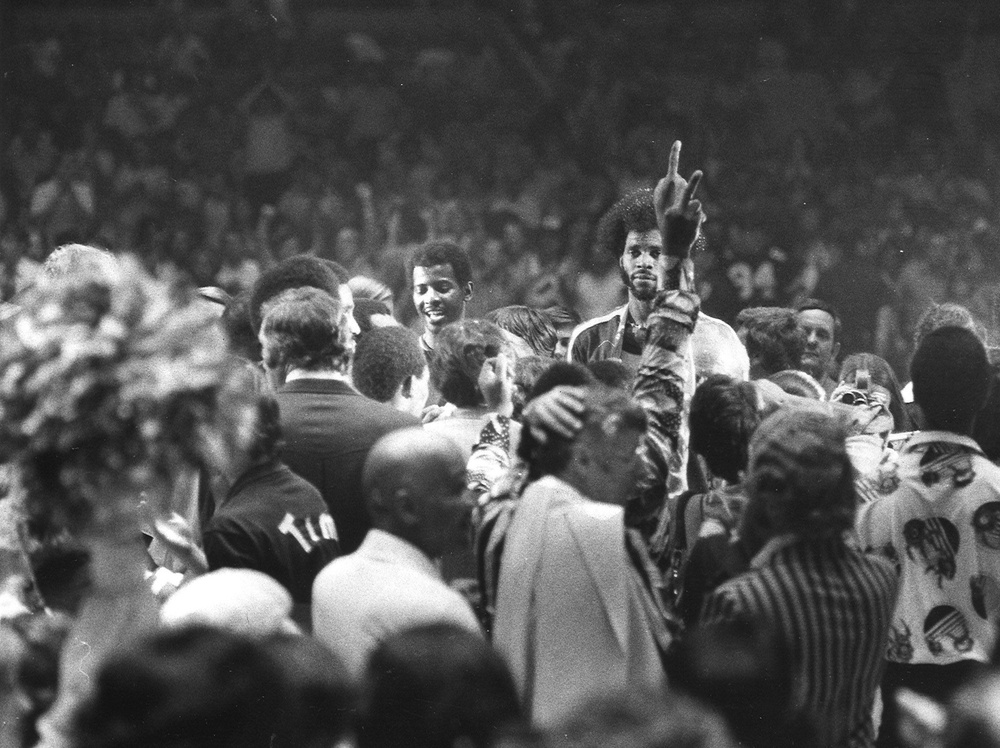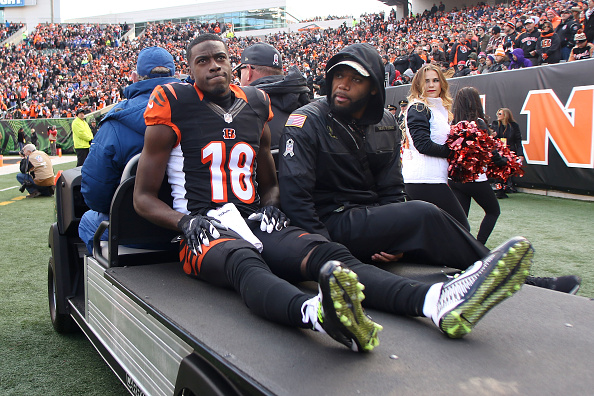Perhaps no three letters symbolize the transformative time of sports during the ’70s like ‘A-B-A’. The American Basketball Association was an upstart league that dared to defy the dominance of the NBA, and they did it with a far-out flair.
Where the National Basketball Association was viewed as having more of a corporate culture and was ‘mainstream’, the ABA was the acid-washed alternative. To say it was exceptionally ostentatious would be an understatement.
From its red, white, and blue ball to the high-flying stars like Dr. J and David Thompson, the league changed all the rules. Even literally. It was where the three-point shot was popularized, which wouldn’t be adopted by the NBA until 1979 – three years after the ABA folded.
While the loosely-banded group of organizations often faced financial struggles, talent raids, and even franchises folding mid-season, it revolutionized the game. While the NBA embraced a more controlled game, the ABA embraced the blacktop, playground style that was more open and creative.
It was fast-paced, it was fun, and it was funky, baby.
Memorialized by historical accounts like Loose Balls and satirized in the film, “Semi-Pro“, it’s become highly romanticized. And for good reason. Because we will never see anything quite like it again.
From 1967 to 1976, the ABA not only provided thrills on the court but some of the most humorous occurrences off of it. The mix of the era and individualism made for an eclectic environment. One that seemed partially like a sporting event, and the other like a cartoon… all symbolized by technicolor and tube socks.
Here are 3 stories from the short history of the ABA
#1 – Franchises’ futures were fragile
One of the biggest problems any rival league encounters is proper backing, not only to finance teams and arenas but for bidding on talent, as well. The American Basketball Association initially sold itself as an alternative for athletes who needed a new home and a change of scenery.
What they didn’t anticipate was how fast that real estate would disappear. Budget problems plagued many of the clubs. There were stories of ridiculous cost-cutting measures, in an effort to stay in business.
Three ABA teams – Memphis, San Diego, and Utah – folded before the end of 1975. The Virginia Squires barely made it through the season before folding up shop in early ’76.
As the inevitable started to draw near, the teams were essentially holding out hope for an agreement with their rivals, the National Basketball Association. That happened, in 1976, though discussions had actually been in place between the two sides for years prior.
During the merger, the NBA agreed to take on four of the ABA teams. The New York Nets, San Antonio Spurs, Indiana Pacers, and Denver Nuggets would be added to The League, with the Kentucky and St. Louis franchises being dissolved. The remaining players from those two rosters were placed in a dispersal draft.
Of the ABA organizations who made the transition, the Spurs are the only ones to have gone on to win an NBA Championship. They have captured the crown on five occasions (1999, 2003, 2005, 2007, and 2014).
#2 – Moses Malone was the schoolboy star of the 1970s
Eventual NBA Hall of Famer Moses Malone spent two seasons in the ABA after forsaking a scholarship from Maryland to make the giant leap to the big leagues. The 6’10” manchild was such a force that the Utah Stars decided to take a chance on him, something that was absolutely astounding at the time.
To put Malone’s timing and talent in perspective: He made the jump from the preps to the pros over 20 years before the Minnesota Timberwolves selected Kevin Garnett out of Chicago’s Farragut Academy with the fifth overall pick in 1995.
Moses Malone took little time to establish himself, becoming an All-Star as a rookie. He played his second season for the Spirits of St. Louis. During his brief tenure in the ABA, Malone averaged 17.2 points and 12.9 rebounds. He’s widely considered one of the best big men of all time and one of the greatest players of his era.
Following the merger, he was a two-time NBA MVP, while starring for the Rockets and 76ers. In 1983, alongside the legendary Dr. J, Moses delivered Philly to the promised land, capturing the NBA Title.
READ MORE: Legends who never played in the NBA
#3 – Marvin Barnes didn’t want to go Back to the Future
Marvin ‘Bad News’ Barnes only had a two-year ABA career, but it was a memorable one. Supremely talented, the 6’8″ Barnes was the league’s Rookie of the Year in 1974-75. The mercurial star averaged 24. points and 13.2 rebounds in his career with the St. Louis Spirits.
Eventually, Bad News’ growing drug problem would force him out of professional basketball not long after the NBA-ABA merger, and he ended up homeless for a time following his playing days. He eventually overcame his addiction and became part of his local anti-drug movement, counseling youth in Rhode Island. Sadly, Marvin passed away in 2014, at the age of 62.
But perhaps the story that best sums up Marvin Barnes – AND the oddness of the ABA – is one regarding a rather famous road trip to Louisville. The Spirits were in town, having taken on the Kentucky Colonels, and they were packing up to head back to St. Louis.
When Barnes was informed that the flight back to The Gateway City would actually arrive before its departure time (due to the gaining an hour by traveling from the Eastern Time Zone into the Central), Barnes refused to get on board.
When asked why, he replied: “I ain’t getting in no damn time machine.”
He rented a car and drove home instead.
Main Image: Courier-Journal-USA TODAY NETWORK



